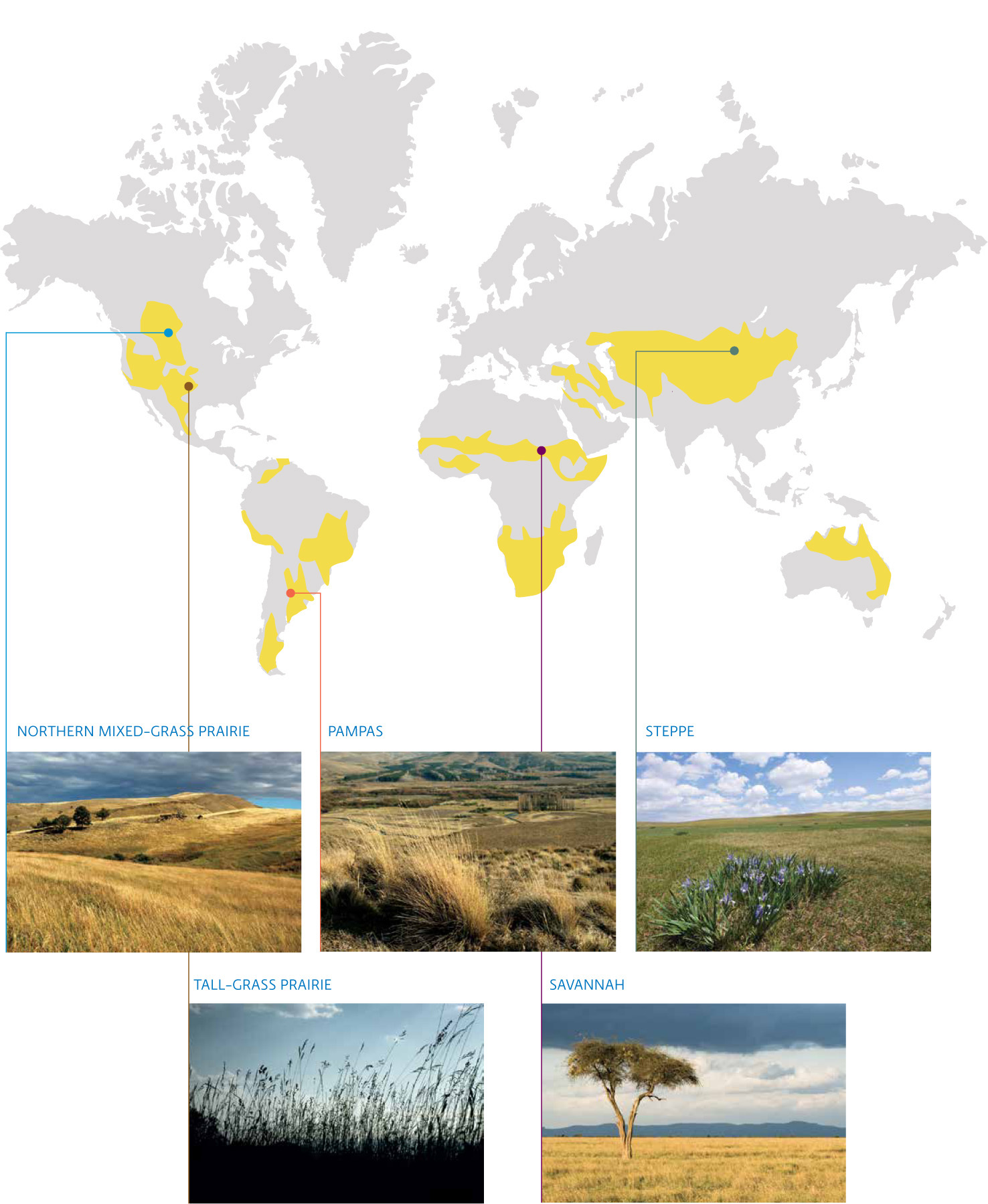12.2 Grasslands provide a wide range of important goods and services.
Grasslands are biomes that receive enough rainfall to support grass and herbaceous plants, but not enough to support forests. They may also be found in regions where rainfall is plentiful but larger plants are kept in check by periodic fires or herds of grazing herbivores. Broadly, there are several different types: tropical grasslands, also known as savannahs, occur in places that have both rainy and dry seasons, but are warm year-round. Cold grasslands like steppes are, as the name suggests, cold most of the year, and are characterized by a very short growing season and ultrathin layers of soil. The Great Plains—which lies between the Rocky Mountains and the Mississippi River and stretches from Alberta, Saskatchewan, and Manitoba into the south of Texas and Mexico—is temperate grassland. These grasslands, known as prairies, contain many species of plants, have thick soils, and have a truly seasonal climate with cold winters and hot summers. [infographic 12.1]

207

Though we might most often think of grasslands in terms of their human uses (pasture, farmland), they provide extremely important ecosystem services such as nutrient cycling, soil formation and protection, carbon sequestration, protection of surface waters, and provision of habitat for both year-round and seasonal wildlife. But it is also true that for thousands of years, grasslands—which cover about 40% of Earth’s surface and contain some of the richest soil in the world—have provided humans with a multitude of goods and services. In fact, most major cereal crops, including wheat, rye, barley, and millet, were originally derived, thousands of years ago, from grassland seedbeds. Today, scientists trying to develop disease-resistant crops continue to rely on the genetic material found in grasslands. Meanwhile, other scientists are perfecting ways to harvest grassland plants as an energy source (see Chapter 25 for more on biofuels).
But the most widespread, human-centred use of grasslands is as food for large grazing herd animals.
In addition to supporting countless wild ungulate (hoofed animals) grazer herds, a little more than half of the world’s grasslands—26% of the planet’s land surface— are used to graze more than 3 billion domestic livestock (mostly cattle, goats, and sheep). This type of grazing provides the primary source of food and income for some 2 million of the world’s poorest people. And while other livestock (like chicken and pigs) consume vast stores of grain that might otherwise go to humans, grazing animals are effectively converting food we cannot eat (grass) into food we can eat (meat and dairy). [infographic 12.2]

208
209